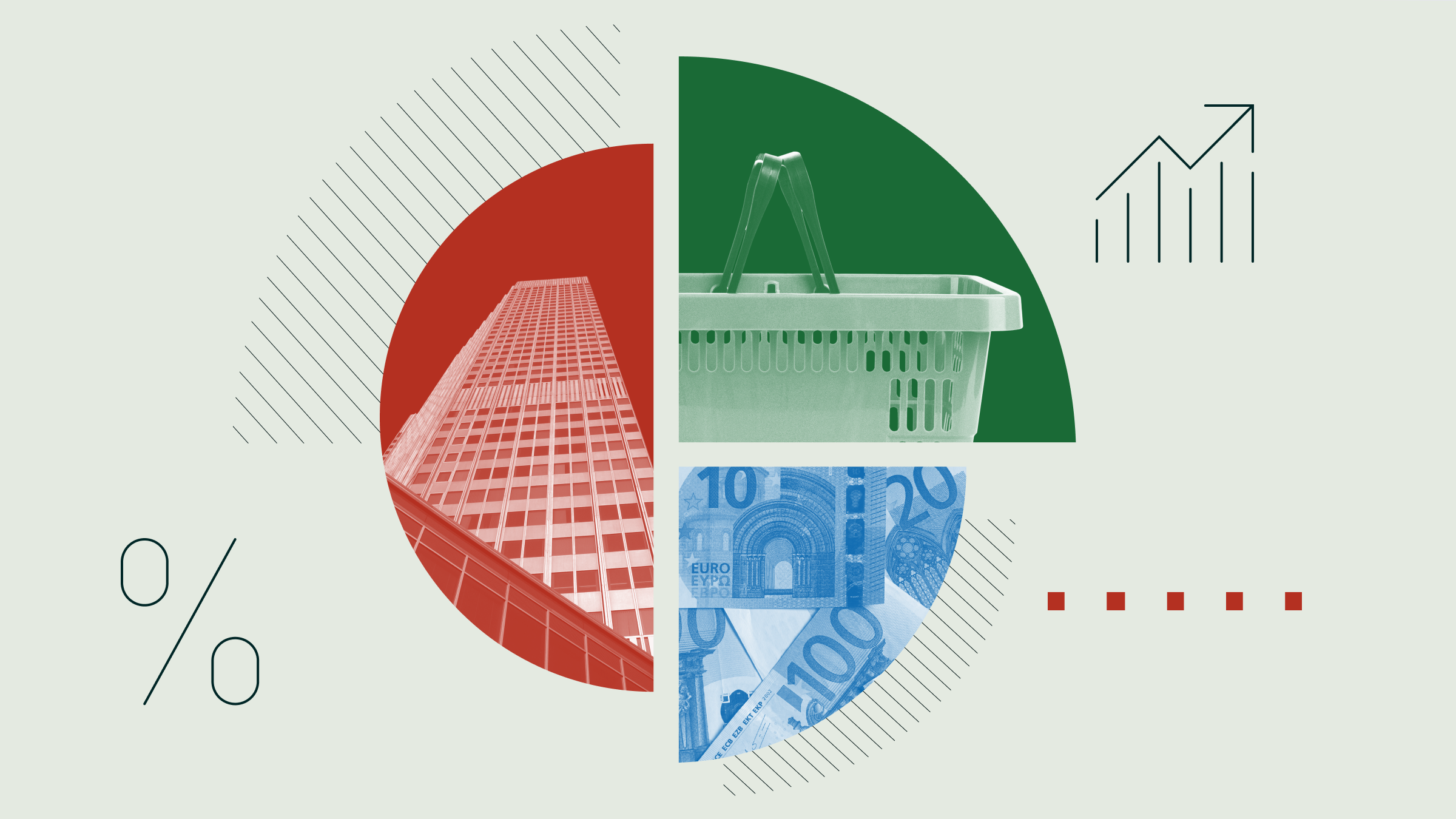Ben Johnson: Hi. I'm Ben Johnson, Morningstar's director of European exchange-traded fund research. I am here reporting from Morningstar's 2011 ETF Invest Conference. Today, I am joined by Chris Goolgasian. Chris is a portfolio manager with State Street Global Advisors, and he shared with us today his team's thoughts on the outlook for gold, something they've worked on quite extensively and actually recently published a really high-quality research report on. So, I am going to ask Chris what he thinks about gold and what his team thinks about gold, the outlook, and how gold can be used within investors' portfolios.
Chris, thanks for joining me.
Chris Goolgasian. Thanks Ben. It's pleasure.
Johnson: So, the topic on everyone's mind, or the question on everyone's mind is, is gold in a bubble right now. What do you think?
Goolgasian: It is. So, I think that's one of the three key questions we've heard and wrote the paper about, primarily, how do you value it, are we in a bubble, and then how much should I own? The question of are we in a bubble, I think my answer is "not yet," and there are a couple of reasons for that. One is, if you look at classic bubbles, there is always a major increase in supply to meet the demand of whatever that asset class that's bubbling is. So, if you look at the tech bubble, in the year 1999 there were 300 some odd IPOs, tech IPOs that year. So, it's like six or seven a week; and to put that in perspective, the year before there were around 100, and two years later there were about 20. So as the tech market rallied, the marketplace tried to meet that demand and put out more and more companies, some of which probably shouldn't have been IPOed and you had this huge supply of tech companies come along.
If you look at housing; in 2004, the housing market had doubled housing starts from the prior 14 years. That's a cycle that had never been repeated or never happened before. Two years later, housing starts were halved and were back to the level of 14 years ago. So, housing inventory rose to meet all the great demand.
What's the analog here for gold? Gold has rallied from $200 to $1,800 in the last decade, and as we showed today in the presentation, the gold supply chart is like this (flat). It hasn't moved. And the reason is that it's very hard for these miners. Even in the face of this growing tremendous rising price, they can't meet that demand with more and more supply. Every commodity cycle tends to end with more and more investing and capital spending. If you get the supply up, the price comes back down. In the gold market they are unable to bring the supply up to meet this demand.
Will it happen someday? Potentially, but it hasn't happened yet. So, that's one angle of why we think we're not in a bubble. Then the sentiment angle is the other one. On the sentiment side, we see--even in the last two weeks with this little downtick in gold--just massive rampant skepticism about gold. If you read the headlines or watch TV, you'll see the adjectives that are used to describe 2% moves: "Gold's Crashing," or "Gold's Cratering." When we're in a bubble, you won't hear any of that, right. You'll just have a bunch of people advocating and supporting and believing that it's just going to keep going up and up and up. We're not there yet and so there is massive skepticism at this level out in the press and out in conferences like this. And that's all good. I think to me that's very bullish. It means we haven't hit that period where everyone's a believer, and when you are in a bubble, everyone's a believer.
Johnson: And your team, as you've shared, doesn't believe in some of the conventional metrics that people used to "value gold," things like the inflation-adjusted gold price, the Dow/gold ratio, or the oil/gold ratio. Why aren't those useful? Then maybe if you could touch a bit more on some of the qualitative factors that you regularly monitor, which of those do you think are the most important and how are those trending right now?
Goolgasian: Right. So, you're taking something, it's like a piece of art or a house and saying, "What is that worth?" Well, it's only worth what the buying market is willing to pay for it. Picasso has no value itself. Your house has no value except what that market will pay. We put gold in that same class. It has no value in and of itself; what's the market willing to pay for it?
Wall Street though came up with a way to value gold, as they always will for any asset class, and Wall Street said, "Let's look at past ratios and past relationships and then support X price." For example, an inflation-adjusted price from 1980 would support that gold today should be $2,500 or gold relative to the Dow or gold relative to the monetary base.
The problem with all of these metrics is that they were picked from prior highs, applied today, and say, "This is what the price should be today." And my answer to that would be this: If we're going to use that line of thinking then we should take the fact that the S&P sold at 40 times earnings in 1999 and that should be our bull case today for equities. The S&P should at its best case trade at 40 times earnings, right? No, that's completely untrue.
But that's effectively what you're doing when you take best-case scenarios for historical prices for gold. And by the way, when I say this it's not as a gold bear, I am saying those prices could be too low. It's not that they are necessarily too high. They could be too low. They could be wrong on either side. The point is that they are likely to be wrong because they are just measuring ratios. They are not measuring a core value because gold doesn't have a core value. So we've applied ratios, we as an industry, not we at State Street.
Johnson: I think the analogy you used earlier, and I thought it was an apt analogy, was that they have effectively shot an arrow at the side of a barn and then subsequently painted the target around it.
Goolgasian: Exactly. Exactly. If Wall Street wants to support a higher gold price, there is a way to look at a bunch of past historical relationships and do that. So you can say, gold relative to the U.S. monetary base, if it peaks again at 2.7 times, it should be at price of $10,000. We can all do that math in a spreadsheet, right. We can also grow gold's price from 1980 on an inflation-adjusted basis and come up with $2,500. We can all do those spreadsheets in 25 seconds. The point is, do they really have any validity, and I don't think they do.
They are not causal relationships. They are just interesting match-ups of prior peaks. It's not that one causes the other. And so that's why we think valuing gold is probably not the best use of time, and instead, a better use of time is observing items that you think actually matter and impact the price, we call these, for lack of a better term, observables. And we have about 40 of them or so today. They run the gamut from many traditional things you would have heard of to some not so traditional ones, but you can imagine that on the list are things like: real interest rates, inflation expectations, what are the central banks doing, what's the sentiment politically, where do we think that the economic growth is going to be, and what's the Fed reaction to that going to be. So there's a long list of these.
On the whole, they've been very bullish on gold for a long period of time. We think that with the 2012 elections still being a while away, it's likely that given the gridlock in place in the U.S. and the slowing economy and thus the reaction to that, which maybe more printing of money, that those observables still look pretty bullish.
Johnson: So, in your bull case, and this is a loaded question and one I think I know the answer to, but what do you think gold's worth then?
Goolgasian: Yeah. So, we are not going to answer a price. We don't have a price target; we never have had one and are not going to have one. Our decision every day is from the level it's at here relative to all the observables we see, are we bullish or bearish from here? When we look at the observables today, we are quite bullish from here forward.
Now, in the short term, we have seen a lot of negative signs in the last couple of weeks that have worried us here. Forget about if the dollar stronger today or that Federal Reserve chairman Ben Bernanke didn't print money yesterday; these are short-term events. In the bigger picture, we don't have a price target for gold, but we have a view on gold that continues to be bullish. So, while we are not going to come here today and tell you number X, we will tell you that our positioning today continues to be for strengthening gold.
Johnson: Now, thinking from an investor's perspective, looking at my portfolio, looking at my asset allocation, how is your team using gold? How are you advising your clients to use gold and view gold within, say, a traditional 60/40 equities bond mix?
Goolgasian: Sure. So, it's an important question to answer not only in terms of people who want to get to percentages, but what should it replace, and I think one thing people think about is gold as a currency, which is how we tend to think about it. And then they immediately think, well, currency and fixed income kind of goes on one side. But I think you need to talk about volatility. Gold volatility has now risen up to be at the level of equities.
So to me, the measure of what you replace is always kind of the volatility profile; it's a big part of that. So we would tend to think about gold as part of a replacement within the equity camp because of its heightened volatility. And with our clients, generally, where we have gold, it's been about sub-5%. And a lot of those times it's with us kind of offering them the idea that they might want to add it, update their investment policy statement, and get their committee to approve it. These are all long processes to take place. There is a lot of skepticism in these conservations, which people don't believe the case of a bullish gold market just yet.
So, generally, we're owning under 5%. I think a lot of that is due to the institutional constraints that these committees face. With time you might see that percentage rise.
On an individual level, if you look at risk/return and what gold can do in a portfolio from a risk/return space using historical correlation, historical volatility, you can certainly support that a 5% to 10% allocation is a portfolio of benefit, but those are all historical data items, and the future could be far different. So you have to think about what's the percentage of gold I want to own in the future irrespective of some analysis I can run on an optimization framework. To me that's very subjective. Your answer and my answer could be quite different. We don't give any blanket response to individuals or even to our institutions to say, 3.9% or 8.2% is the right answer.
A lot of it has to do with your view on dollars and how much of your portfolio are you concerned with in terms of U.S. dollar return versus a gold return. So, the story we talked about today was, if in your personal account you had a magic button you could hit that would translate your account into gold returns instead of dollar returns, you could hit that button and then type in how much of it you wanted to be translated into gold returns, what would you type into that box? And the analogy here is that John Paulson developed this share class on his hedge fund so that you could get gold-denominated returns off of his hedge fund.
Imagine that that's brought to the personal account level and you could do the same thing. You could say, "I'd like 20% of my personal account denominated in gold returns instead of dollar returns or 5% or 10%." Whatever your answer is to that question, to me then that's the answer to how much gold should you own because that button doesn't exist. You can't actually hedge your dollar returns at a free transaction. So you should probably buy the equivalent amount of gold that you are answering in your head that you would hit the button on, and that's the best I can do is take you through that exercise. I can't tell you your answer should be 7% or 9%.
Johnson: The answer is to virtually everything in finances, "it depends."
Goolgasian: It depends. Exactly right.
Johnson: So Chris, thanks so much for joining us and for being here today.
















